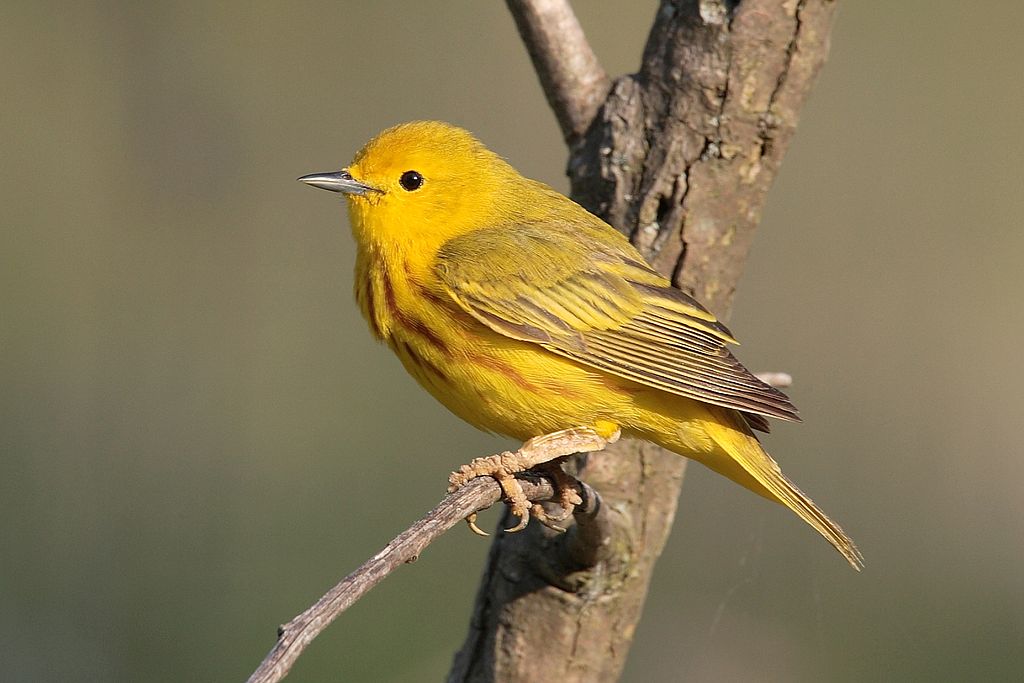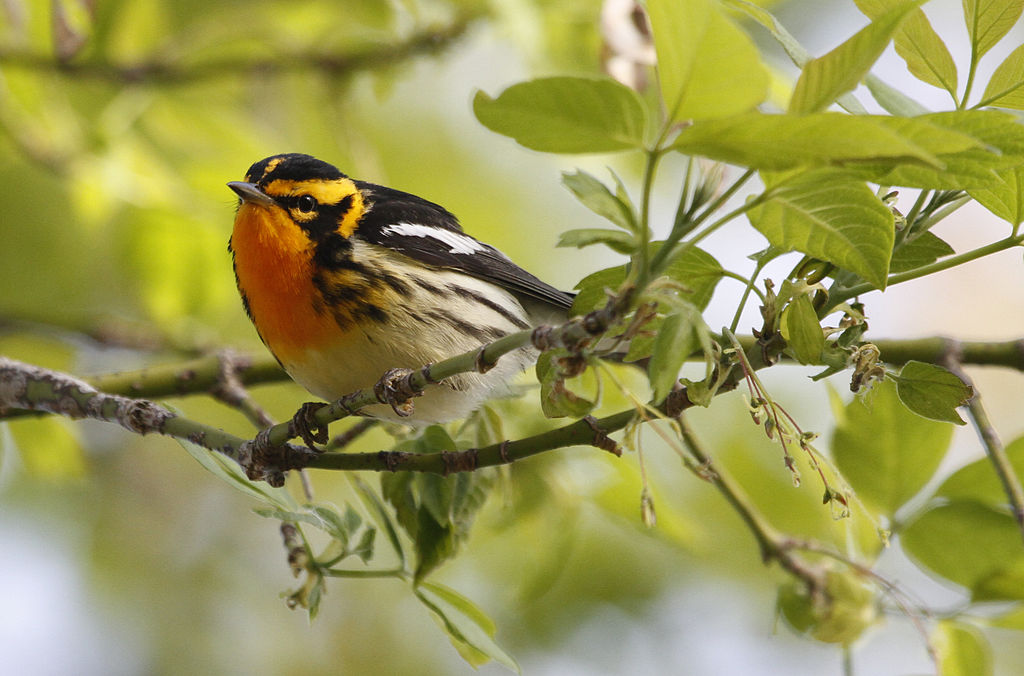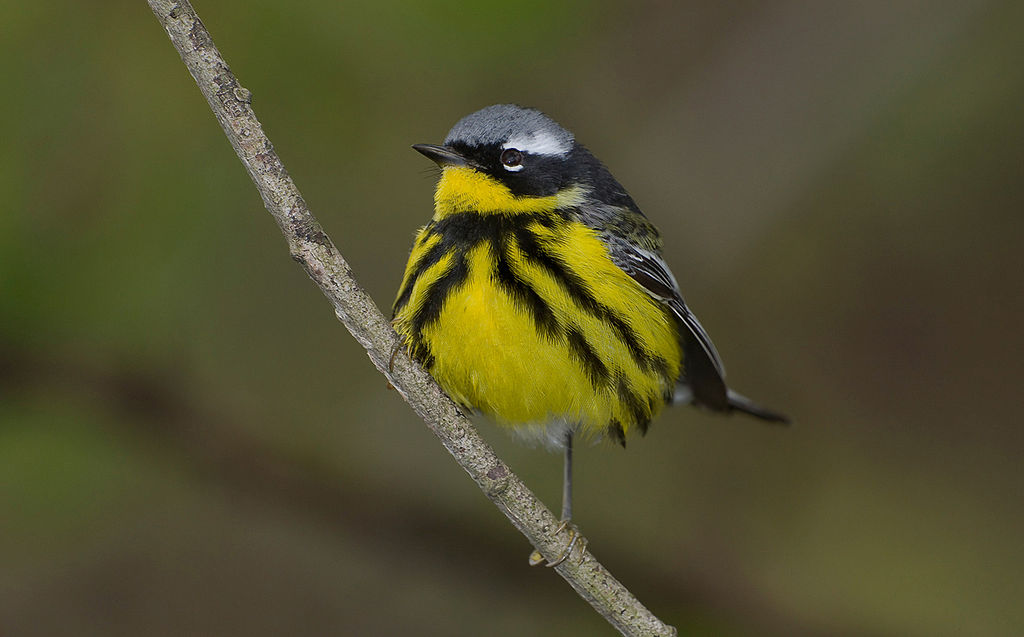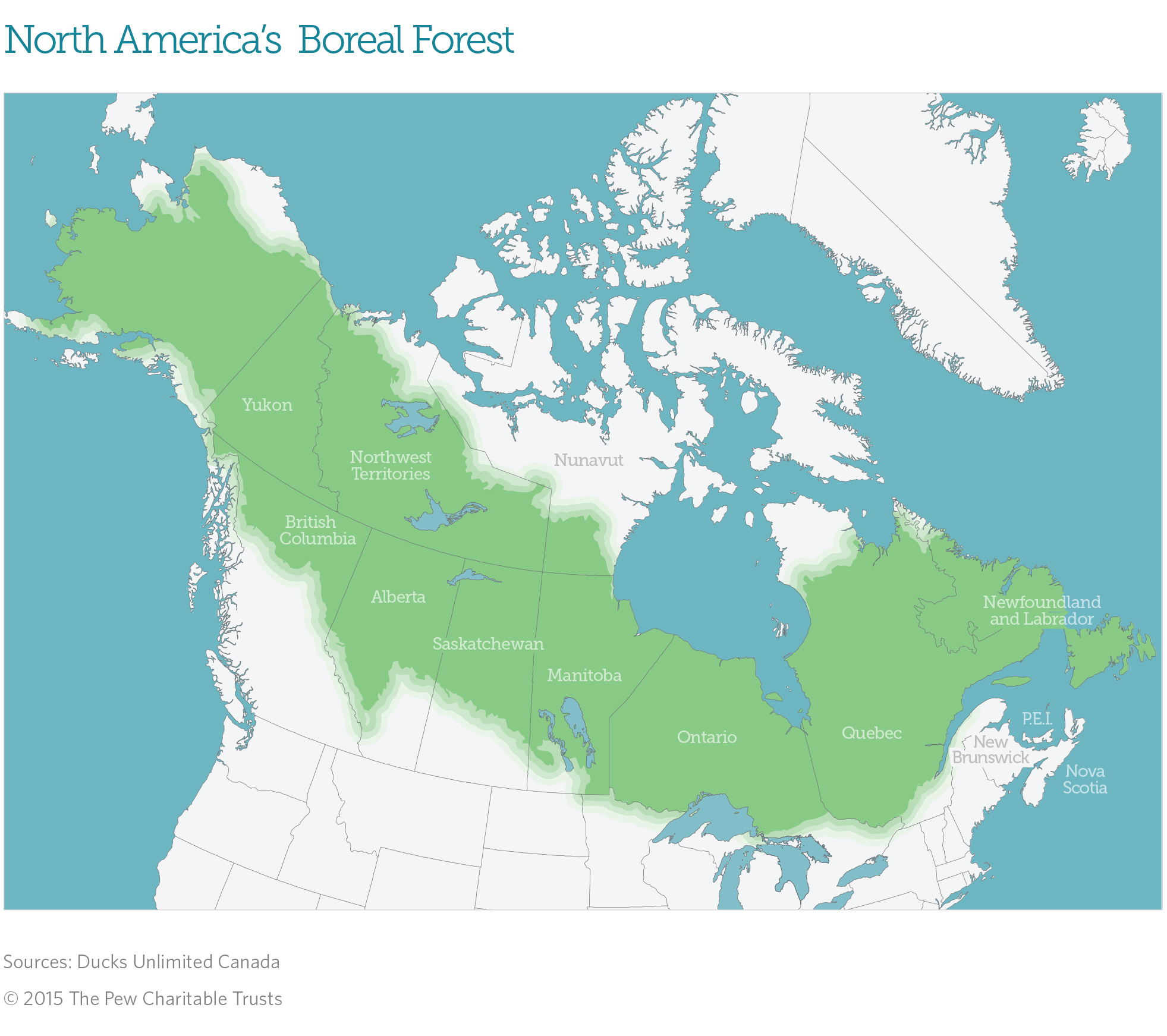Habitat conservation in Canada giving these colorful birds reason to flap their wings
Yellow Warbler
Credit: Mdf/Wikimedia Commons (CC 3.0)
Although the majority of birds in North America lack the vibrant hues of many of their tropical counterparts, there are a few families that strike an exception. Warblers are one such case: the dozens of warbler species that grace our continent boast a variety of vivid colors. Yellow is the most common, from the full-bodied Yellow Warbler and bright-as-a-bumblebee breast of the Canada Warbler to the tangerine splashes on the Blackburnian Warbler and American Redstart.
The Bay-breasted and Chestnut-sided Warblers feature coppery red streaks that flank their otherwise white bellies. The crowns and backs of the Cerulean and Black-throated Blue Warblers reflect the blue seas they cross to reach their wintering grounds in South America and the Caribbean, respectively.
Blackburnian Warbler
Credit: Paul Hurtado/Wikimedia Commons (CC 2.0)
Of course, any birder knows that it is not a bird’s colors that make it special. Feeding and breeding behavior, rarity, song, and many other unique characteristics are what provide its charm and intrigue. Vagrant occurrences offer exciting glimpses of the species we would otherwise have to travel to see, while irruptions and fallouts provide an element of mystery and awe, with the latter providing an opportunity to see dozens of species in a single day that may otherwise take weeks and multiple viewing locations to replicate.
However, there can be no denying the aesthetic allure of the vibrant colors featured throughout the world of warblers, particularly to casual and newly introduced birders. Given the fact that most winter in the Caribbean and Central and South America, it almost feels like they’re bringing with them some of the colors and flair of the tropics when returning home to breed.
Spring migration provides the primary time to enjoy these colorful wonders for many in the U.S. and parts of Canada. Throw in the fact that warblers in general are known for having very sweet and melodic songs, and it’s no surprise that they attract interest from birders across the continent during those fleeting months we find them in abundance.
Magnolia Warblers, which flock to the Boreal forest to nest, often stop in Central Park
Credit: William H. Majoros/Wikimedia Commons (CC 3.0)
Even Central Park, a respite of green surrounded by the industrial gray of America’s largest city, becomes a hotbed for birders trying to catch a glimpse of the variety of warblers that frequent the park to drink, feed, and rest amid their long migrations.
Beyond their striking beauty and delightful melodies, there is another thing that ties the wood warbler family together: prominent reliance on North America’s Boreal forest for nesting habitat. While there are exceptions—Prairie, Hermit, and Yellow-throated Warblers to name a few—as many as 27 wood warblers regularly breed in this lush green belt that spans the northern reaches of our continent, from Alaska all the way to Newfoundland.
Some have roots so deeply entrenched in the Boreal that it’s almost impossible to spot them anywhere else during the warm summer months. The Palm and Tennessee Warblers, for example, feature an astonishing reliance on the North American Boreal—an estimated 98% and 97% nest in the Boreal each summer, respectively.
Given what we know about how important the nesting period is for species success and abundance, it should come as welcome news for warbler fans that there have been great gains in forest conservation throughout the Boreal over the past decade.
Although far from the only major developments, perhaps the most notable are two large-scale conservation initiatives set forth by the provinces of Ontario and Quebec (details here and here)—which also feature some of the largest tracts of intact Boreal forest in the world—that commit to setting aside at least half of their northern Boreal regions from development in the coming decades and which will eventually result in around 200 million acres of protection.
These follow the model set forth by the visionary Boreal Forest Conservation Framework, which has been recommended by more than 1,500 scientists worldwide and whose basic tenets have more recently been endorsed by more than 25 bird- and wildlife-focused organizations across the continent.
Dozens of millions of acres of interim protected areas have also advanced in the Northwest Territories through a series of Indigenous-led land use plans under what was formerly known as the NWT Protected Areas Strategy, which are now being considered under their new government structure for eventual permanent protection.
And although it didn’t receive as much fanfare as it likely deserved—in part because it isn’t obvious to those not closely following to see how big this could potentially be if implemented correctly and province-wide—Manitoba recently committed to work with its numerous Indigenous communities and governments to implement community-led land use plans within their traditional territories.
Boreal forest in Manitoba
Credit: Ron Thiessen
These and many other inspiring efforts to protect the Boreal forest should be welcomed and celebrated among the millions of birders that call our continent home. And most importantly, they should provide encouragement in calling for other jurisdictions that have yet to set aside large portions of the forest to date to up their game.
Continuing this momentum in conserving and sustainably managing our Boreal forest will go a long way toward assuring our children and grandchildren have the same opportunities to be captivated by the bright flashes of warblers darting through the leafy branches of our parks and neighborhoods and serenaded by the sweet sounds of their calls.





